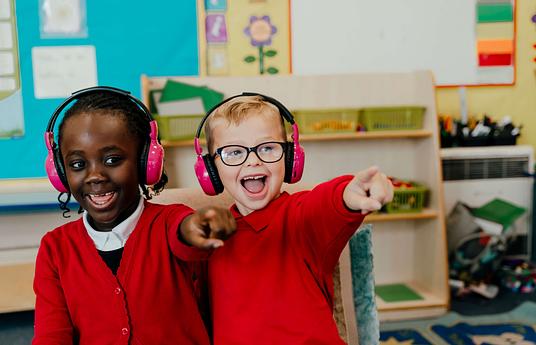Our Story
KUBO Robotics started as a master’s project at the University of Southern Denmark in 2015 when Daniel Lindegaard and Tommy Ozten realized not enough was being done to teach students — especially younger ones — coding and computational thinking in a social, hands-on context.
The solution is KUBO and its revolutionary physical programming language, the TagTile® .
Since 2015, a lot has happened for KUBO. The company has won many awards, and has welcomed new members to the team. The little robot has become available in many countries, sold via professional educational providers.
The KUBO Coding solution will continue to expand with new TagTile programming options, lesson plans and other creative tools.
We work hard to democratize technology and accelerate learning, and we’re happy that the KUBO learning approach has already won so many hearts and minds.
What we do!
KUBO Robotics is a screen-free coding solution that has students piece together icon‐based tiles, called TagTiles®, to create instructions, or code, for their robot to roll over and execute. It’s screen free and super approachable. Learners as young as four can code! Though, just because it’s designed to be easy doesn’t mean it can’t create some serious code including functions, loops, and subroutines while also growing with students’ capabilities. There are advanced sets that extend learning through fifth grade with Coding+ and Coding++.
While schools and governments around the world focus on teaching kids language, math, and science, very few acknowledge the importance of teaching a generation of digital natives how to communicate with and understand technology. And with studies indicating that 47 percent of all jobs will be automated by 2034, the need to teach students programming has never been greater.
So, how can you tell a story with KUBO?
KUBO can become the main character for so many adventures. For example:
-
KUBO can become Indiana Jones or a great explorer and travel to Africa, Australia, or North America. You can even download a hat and backpack to take on the journey. Students will code the path through the country – whether that’s straight through or experiences a few turns along the way. Students can tell about the travels, the geography, the sites seen, the food enjoyed, and more. Read more about this Global Citizen experience on the KUBO Blog. There’s also a road trip option for more local travels! -
KUBO can become a superhero and navigate an obstacle course to save the day. Coming up with a name and a mask and cape will really bring the persona to life. Students will create a path to navigate the obstacles and then tell others about their superhero and the obstacles encountered. -
KUBO is invited to acostume party and dresses up as a favorite storybook character. Students plan their route to the party and describe what the party they attended is like. They can also share why they picked the character they dressed as and why they like that story. -
KUBO can go on a monster hunt. Students will code their hunt, detail the monsters, describe the environment or their route to find the monsters, and tell what the monsters are like There are so many details to work out!
All of these ideas can be accessed for free under the ‘More Great Ideas’ section on theKubo.education site.
Students can come up with their own topics too, such as a Valentine’s Day robot dating show that this special education class dreamed up.
Beyond the fiction, students could also use KUBO to tell their friends about real-life events or retell past experiences. Or, even learn how to complete a task through a story-based depiction.
CREATING A MEANINGFUL IMPACT
At KUBO we believe that empowerment of our children to prepare them for the future, requires a peer-to-peer centric and playful form for learning that is relevant and inclusive. We have set out what is most important to us about learning, and why we believe learning to code and developing computational thinking are essential skills for the future.



